Intel Z77 Motherboard Review with Ivy Bridge - ASRock, ASUS, Gigabyte, and MSI
by Ian Cutress on May 7, 2012 7:40 PM EST- Posted in
- Motherboards
- MSI
- Gigabyte
- ASRock
- Asus
- Ivy Bridge
- Z77
ASRock Z77 Extreme4 – BIOS
The ASRock graphical BIOS has evolved from the initial days of Sandy Bridge into a bright blue screen with options we see below. With a graphical BIOS, there are two things to focus on – presentation and usability. Not by any great stretch of the imagination, one could design a great BIOS for everyone to use – with an infinite color palette and tools it could look amazing. However implementing such a system could be tricky, as a BIOS is currently limited to approximately eight megabytes in size. This has to contain all the initialization parameters for the board, as well as all the BIOS options we get to play with. I can imagine that should that limit ever increase to 16 or 64 MB, we would have a lot nicer things to look at.
I could wax lyrical about what I want in a BIOS, but as it currently stands, we will never get a work of art or functional awesomeness. ASRock make a fair attempt, one of the better ones in fact, and it turns out to be easy to use.
The main screen shows the BIOS version, CPU, memory and frequencies. What would put the cherry on the top would be the CPU voltage and temperatures as well. If there is room, perhaps some fan speeds (similar to ASUS’ EZ mode) should also be included. The main screen also has a system browser element, which is a top down view of the board with details on what is plugged in.
Overclocking options are essentially all bunched in one list in the OC Tweaker menu:
Important options like the CPU multiplier and BCLK are plain to see, as well as voltages and load line calibrations. The ASRock BIOS had no issues in applying the XMP settings on my G.Skill DDR2-2400 kit of memory.
The Internet Flash utility is something new to consumer level BIOSes – ASRock implements this in their Advanced Menu. If your motherboard is linked via Ethernet to the internet (thus on a network, or via ICS), then it will probe the ASRock servers for the latest BIOS. It will then be downloaded and applied without hassle. I really like this feature – it makes my life a lot easier at least!
Fan settings are all controlled in the H/W Monitor screen. This shows temperatures, voltages and fan speeds, and gives options for the various fan headers on-board. The main issue I have with ASRock fan options is the fact that they are not clear. We should have all our options regarding temperatures and target temperatures – instead we get a ‘Level’ system. This means that ASRock should probably invest in better fan controllers so they can talk back to the system regarding RPM, temperatures and relating these all to sensors on-board.
Software
ASRock’s software has not changed in any major detail since their last outing on X79. At the heart of the system is ASRock eXtreme Tuning Utility (AXTU), which controls OS overclocking, fan controls, energy saving and XFast RAM. XFast RAM itself allows 32-bit OS users to unlock memory not found, or 64-bit users to enable a RAMDisk to speed up certain caching utilities in the operating system.
Also from ASRock is the XFast LAN software, which in fact is a licensed version of cFosSpeed with ASRock decals. This software allows full management of the network facilities on the motherboard – shaping traffic for different functions as well as monitoring tools amongst others.
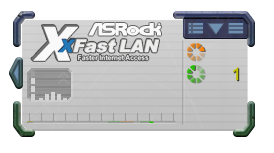
XFast USB is another of ASRock’s licensed software bundled with each motherboard. This utility will change the driver from the standard Windows one to one that can implement BOT (Bulk-Only Transfer) protocols. In reality, this allows for quicker transfers due to less overhead, at the expense of latency. For bulk transfers, I find that this utility works really well, especially with incompressible transfers. The downside being that it is only applied to one USB port at a time.
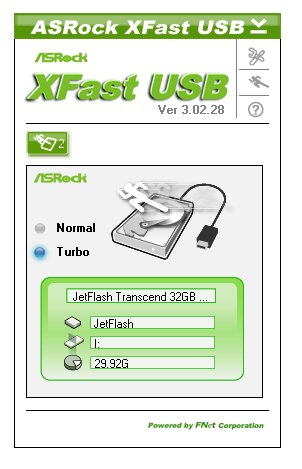


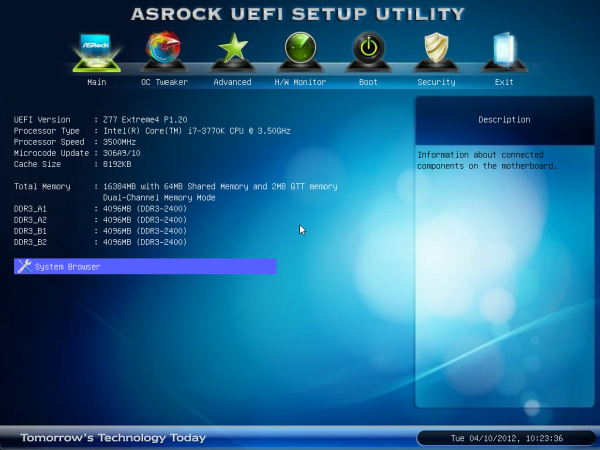
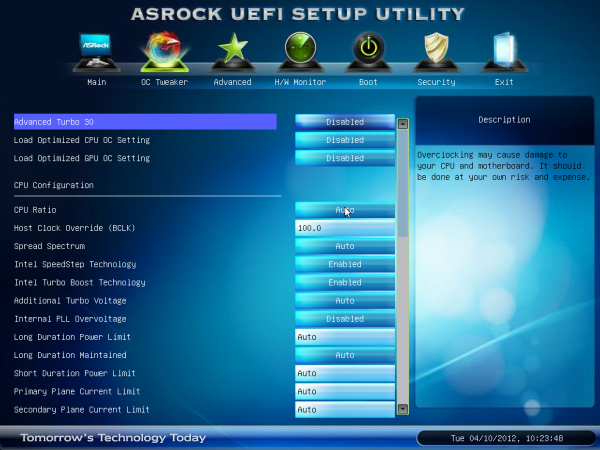
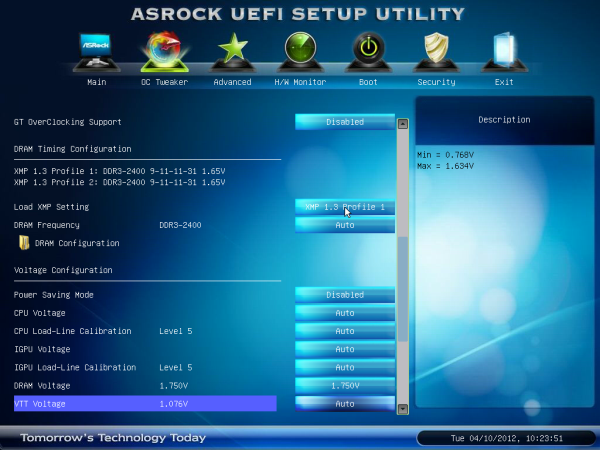

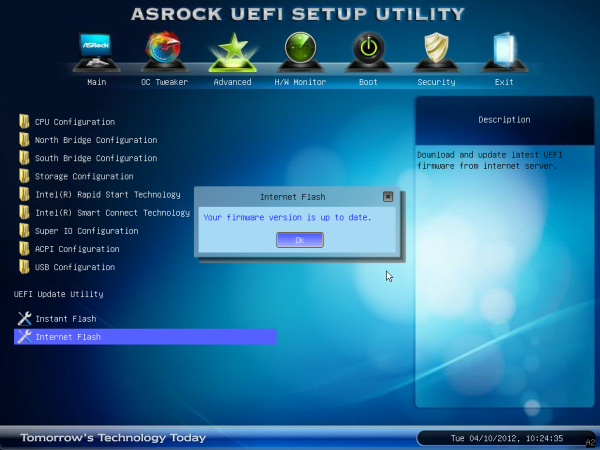






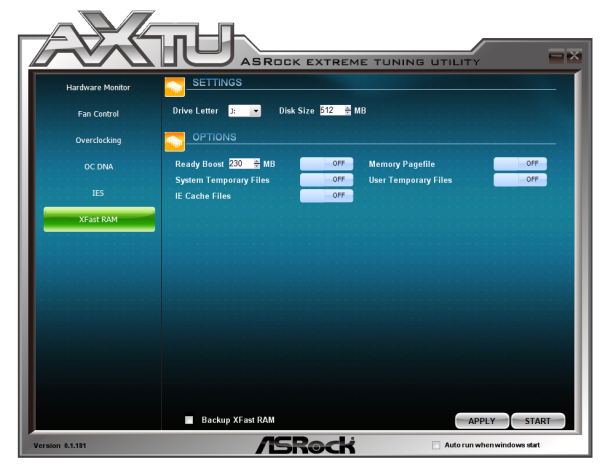














117 Comments
View All Comments
bji - Tuesday, May 8, 2012 - link
Don't intelligently designed modern operating systems use as much unused RAM as is available as filesystem cache? I know Linux does, I would expect Windows 7 does as well. In which case, I have to wonder what the value of a RAM disk except to make your persisted data completely volatile and lost on a power outage.Turning the unusable RAM beyond 4 GB into a RAM disk when a 32 bit operating system is in use is the only marginally useful feature that you mentioned, but you have to be stuck with a 32 bit OS for that to be of any value.
Using a RAM disk comes at the cost of vastly increased complexity for managing persisted files (having to copy things from RAM disk to persistent storage before shutting down) and vastly increased risk of loss of data on unexpected power outage. All of the RAM disk useability features in the world won't help with those issues.
Zoomer - Tuesday, May 15, 2012 - link
Temp, cache or scratch files would be good uses of a ramdisk. Other than that, there's really no point.kstan12 - Tuesday, May 8, 2012 - link
i would *love* to read a review of ivy bridge that doesn't include an engineering sample. my i7-3770k seems to want a lot more voltage @ 4.7 than what i see in reviews online. i know one might clock higher than another but it seems these ES samples use less voltage. am i wrong here?and where did you get the updated bios for the asus p8z77-v pro? i can only download 0906. :-)
IanCutress - Tuesday, May 8, 2012 - link
Hi Kstan12,My ES is stepping 9, which is identical to retail. It's all about the luck of the silicon at the end of the day.
Ian
kstan12 - Wednesday, May 9, 2012 - link
oh ok, so you would just compare the stepping, thanks! maybe i'm not so good at overclocking too.love reading your articles...you explain things quite well, good work!
vegemeister - Thursday, May 10, 2012 - link
Unless you bought it retail, they could have easily given you a cherry-picked chip. There is a lot of variation in semiconductor manufacturing, even on the same stepping.Zoomer - Tuesday, May 15, 2012 - link
If that's the results from a cherry picked chip, there would be a very compelling reason to choose SB over IVB for overclockers.JSt0rm01 - Tuesday, May 8, 2012 - link
But I feel like the release schedule has slowed way way way down. We need amd to step back up to the plate. We need more competition. I have been waiting on the new xeon parts for what seems like forever.-------------
Also, after being a member of the anandtech forums for 10 years I was permanently banned by the moderators there because they wanted to censor a website (ffdt.info) that had conversation that was critical of their moderation. I find that the free flow of all information on the internet is critical. For a tech website such as this to limit the flow of information is offensive the core of these beliefs and its all because certain people in positions of illusory power deem that information detrimental to their positions.
bji - Tuesday, May 8, 2012 - link
To your first point, x86 development HAS slowed way down and the trend will continue. With consumer computer usage turning more to cell phones and tablets, the market for faster x86 parts can no longer sustain the billions of dollars of R&D necessary to advance x86 state of the art. Intel is probably in the process of reducing their x86 R&D budgets in anticipation of this.This will not change, even if AMD makes a comeback. I have predicted in the past that the fastest x86 part ever to be produced will be no faster than 50% faster than the current fastest Ivy Bridge. I stand by that prediction.
Sadly, the heady days of rapid advances in x86 tech are over, as anyone who witnessed the early/mid 2000's and can compare them to now will testify to.
JSt0rm01 - Tuesday, May 8, 2012 - link
Its unfortunate for power users. I will probably end up with a 2010 6-core mac pro to replace my aging 2006 macpro (please no anti-apple I use certain software and my industry is almost 100% apple I also have been building my own pcs since 1998) but what comes after that? I've already held this macpro for longer then I've had any computer. I guess what comes next? Will arm processors in 15 years be monsters of computational power?-------------
Also, after being a member of the anandtech forums for 10 years I was permanently banned by the moderators there because they wanted to censor a website (ffdt.info) that had conversation that was critical of their moderation. I find that the free flow of all information on the internet is critical. For a tech website such as this to limit the flow of information is offensive the core of these beliefs and its all because certain people in positions of illusory power deem that information detrimental to their positions.